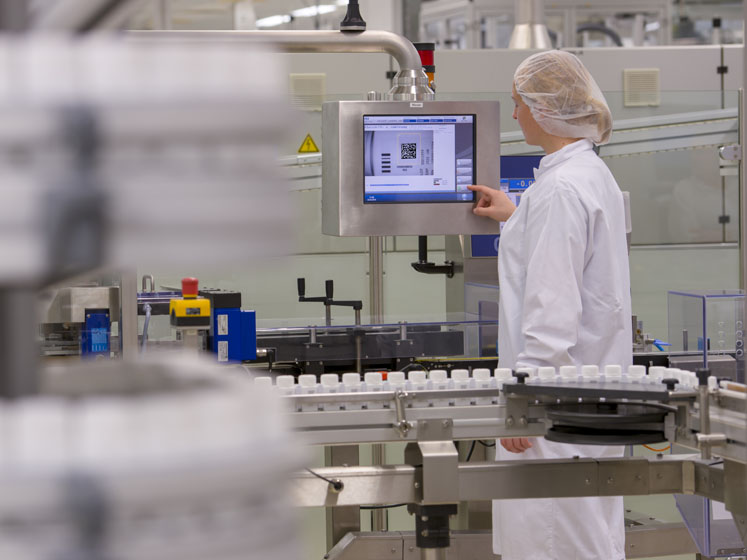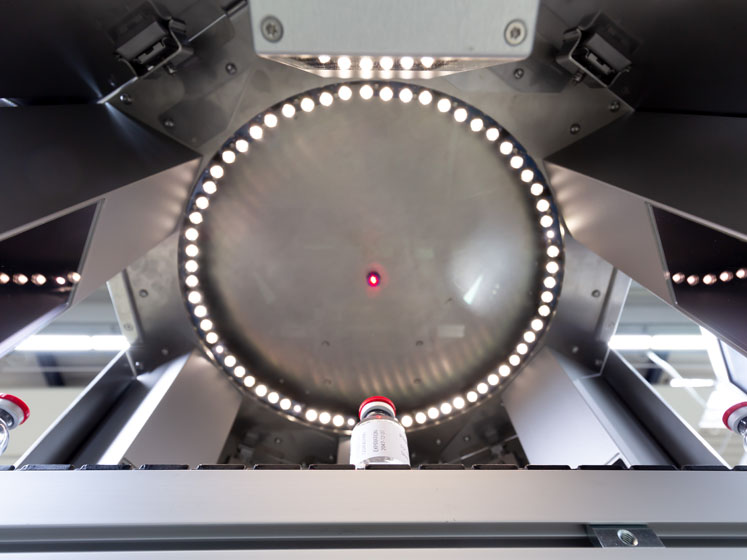In three steps, Jürgen Kress, General Manager for Checkweighing and Vision Inspection at Mettler-Toledo Product Inspection, outlines how sophisticated weighing technology helps to ensure that liquid pharmaceutical products are safe for consumers and compliant with regulations.
He also examines the importance of serialisation and aggregation, and how product inspection helps to drive transparency in the digital supply chain. Finally, he explains the importance of software connectivity as a critical part of making product packaging quality happen.
Step 1: Getting dosage sizes and pack completeness right
It’s no exaggeration to say that quality assurance in liquid pharmaceuticals is a matter of life and death: give a patient too much or too little of a drug and the results might prove fatal. Such potential consequences are bound to keep liquid pharmaceutical manufacturers on their toes.
Their responsibility is to drive high standards of product quality and to maintain these standards during the filling and packaging processes that ultimately deliver the finished product — be it a bottle, vial, ampoule or other vessel — to the patient or health sector organisation that will use it.
The technology solution: The solution for liquid pharma manufacturers lies in technical automation. Product inspection systems can perform the required technical tasks, in a fail-safe manner, and at the production speeds that manufacturers need to operate at to be profitable.
In this specific field, an advanced checkweigher is the best option to ensure that dosage sizes in primary packaging are correct. The system must be capable of extremely accurate weighing and of careful product handling.

These products are very often small, light, fragile and, in the case of bottles, if not securely supported on the conveyor belt, are liable to tip over during processing. If a container breaks, there is spillage and possible glass fragments that can cause a line to be shut down for cleaning, along with waste from the affected products on the line.
Getting the sensitivity correct: A checkweighing system based on high-performance electro-magnetic force restoration (EMFR) load cells has the required level of sensitivity to work with such lightweight products. It is not, however, just that the dosage amount might be under- or over-filled; there is also the issue of whether the bottles or vials themselves are of a uniform weight when empty.
Even slight fluctuations in the tare weight of the vessel can have a profound impact on the gross weight of the product once filled. Therefore, each individual bottle’s tare weight must be determined first, so that the correct dosage size leads to a predicted gross weight of product.
If fragile glass bottles and vials are not handled carefully during processing, they may break, leading to machine downtime while the problem is rectified. Therefore, checkweighers must have sophisticated product handling capabilities, including sorting and rejection mechanisms, to minimise this risk.
Optimising productivity: This brings us to the further benefits that fill level control of liquid pharma products can deliver. Less downtime equals greater productivity and speed to market. Eliminating the risk of over-filling and product giveaway ensures that the stock of medicine the manufacturer holds is optimised for the maximum number of bottled products, making the manufacturer more profitable.
The avoidance of serious safety incidents preserves the brand’s good name in the market. All of these factors represent an economic benefit to the manufacturer.
Alongside fill level control, another key part of quality assurance is the product completeness check. This can relate not just to the liquid itself, but to other things — typically a folded leaflet with medicine information and instructions for use — that must also be included within the product packaging to meet compliance requirements.
Once again, these are very lightweight components of the package, but a sensitive checkweighing system can determine whether a pack has a leaflet inside or not by detecting subtle weight differences. An additional countercheck function in checkweighers can also help to ensure that rejected products are indeed off-weight and were correctly rejected. These processes can usually be done without disrupting production speeds.

In summary, the checkweigher can inspect the fill level, comparing tare weights with gross weights to make sure the right dosage size has been filled. It can also identify that a packaged product has been completed with all the components that need to be included.
Aside from the safety of the patient or consumer, the benefit to the liquid pharma manufacturer of product inspection being able to detect these issues before a product is shipped to market is that they can avoid the significant financial and reputational costs that are the result of product recalls.
With fill level and completeness control, however, the case for the importance of high performance checkweighing becomes more apparent: patient safety is the main priority, but there are financial benefits for the manufacturer too.
Then there's compliance: Product inspection systems such as checkweighers constantly gather and share production line data. This can be used to demonstrate that the manufacturer is operating in compliance with governmental regulations such as US FDA’s 21 CFR Part 11 (which requires an audit trail of processing changes to be created and stored electronically), as well as those contractually set down by retailers.
Next steps: As supply chains have become increasingly digitalised, so the collection of data has been linked more and more to individual products, each with a unique serial code, enabling it to be instantly identified. This is critical in liquid pharmaceuticals and forms the basis of the second step: serialisation and aggregation.
Step 2: Serialisation is the key to the digital supply chain
The pharmaceutical supply chain is a digital one, driven by the electronic exchange of data. It cannot operate without serialisation — giving each product its own unique and verifiable code — and the aggregation of batches of products under a similarly verifiable code.
Context is especially important here. A worrying trend in the pharma market is that of counterfeit medicines, with unscrupulous suppliers seeking to make money from copycat medicines of which the product quality standards and safety are extremely dubious.
Serialisation: The digitalisation of the pharmaceutical supply chain has helped to tackle this problem and the serialisation of products is required to differentiate legitimate products from fake ones. Far more than this, though, serialisation also paves the way for digital transparency and traceability throughout the supply chain of individual packs, and manufacturers can benefit from that in many different ways.
For example, it is a fact of life in the pharma business that, occasionally, there are problems with a product (such as a single vial) that needs to be recalled. With serialisation in place, the manufacturer can utilise the serial code and access an audit trail of events and stages in an individual product’s progression from manufacturing and packaging to distribution.

If a recall must be made, the manufacturer can therefore be much more targeted in the scope of its recall, focusing on the specific products that it knows have been affected, rather than entire batches (many of which might be perfectly good products).
Aggregation: Serialisation is followed by aggregation, in which large batches are grouped together in a box, case or pallet for global or regional distribution. Aggregation can also serve as an anticounterfeit measure, offering additional assurance by checking these secondary boxes at key distribution points. Aggregation is becoming a mandatory requirement for compliance in many countries.
Whether we are talking about the unique serial code on an individual product or an aggregated batch, the existence of a verifiable cypher immediately suggests quality and legitimacy. It reflects positively on the pharma manufacturer. However, an important word here is “verifiable.” The application of the code itself needs to be done with high quality, so that it is readable with no smearing or skewing.
Partly, this is a labelling and printing issue, in that printing onto labels or directly onto the side or top of a package must be approached with a view to producing a code that is both clear and legible. That is only half of the story, though, inspection of the code is the second part.




